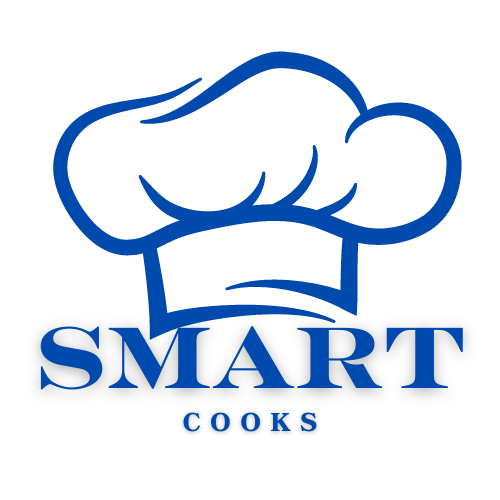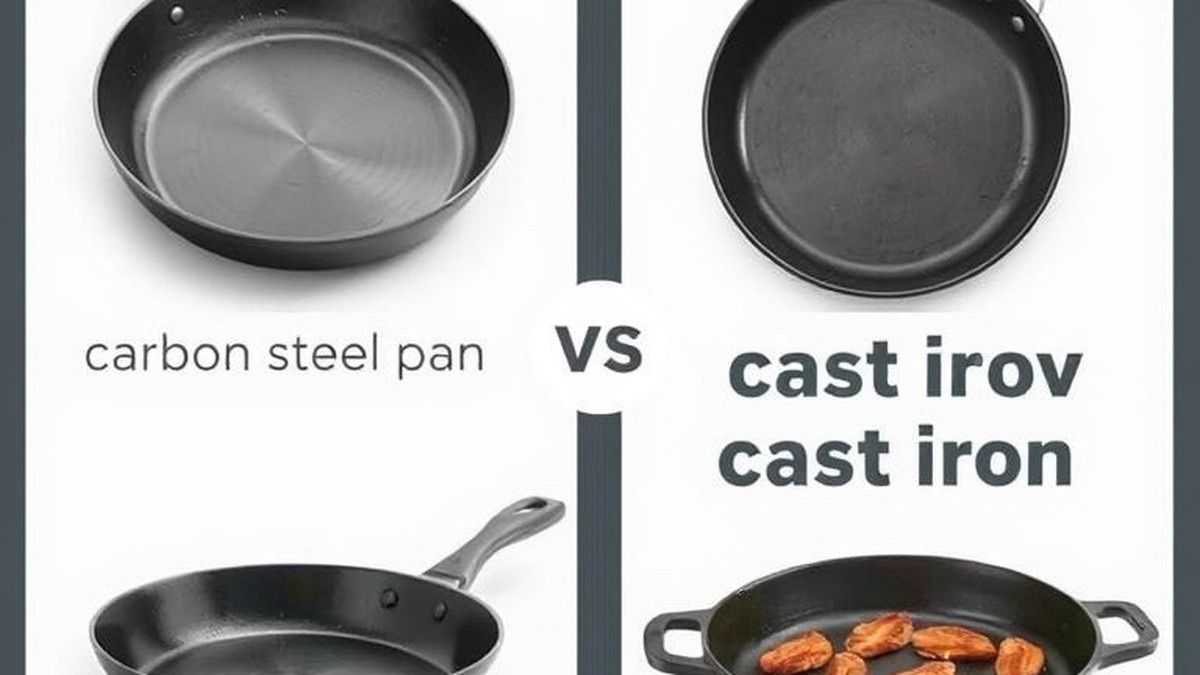When it comes to durable, high-performance cookware, carbon steel and cast iron are two materials that consistently rise to the top. Both are cherished by home cooks and professional chefs alike for their exceptional heat retention, ability to achieve a perfect sear, and natural nonstick properties developed through seasoning. However, despite their similarities, each type of pan offers distinct characteristics in terms of weight, heat responsiveness, and handling. This detailed comparison aims to highlight these differences, guiding you to make an informed decision on which pan best suits your culinary needs.
Specification Table
| Feature | Carbon Steel Pan | Cast Iron Pan |
|---|---|---|
| Material Composition | Approximately 99% iron and 1% carbon. | Higher carbon content than carbon steel (2-4%), resulting in a more brittle but excellent heat-retaining material. |
| Weight | Significantly lighter than cast iron, offering more agility and easier handling for tasks like tossing and flipping. | Notably heavier and more substantial, contributing to its stable heat retention but requiring more effort to maneuver. |
| Heat Up Time | Heats up quickly and responds rapidly to temperature adjustments, allowing for precise control. | Heats up slowly and gradually, requiring patience but leading to very even, consistent heat. |
| Heat Retention | Good heat retention, capable of maintaining high temperatures for searing, though slightly less than cast iron. | Exceptional heat retention, ideal for long cooking periods, deep-frying, and baking, maintaining consistent temperatures. |
| Natural Nonstick | Develops a robust natural nonstick surface with proper seasoning, often arriving pre-seasoned. | Forms a durable natural nonstick layer over time with consistent seasoning and use. |
| Durability | Extremely durable and resilient; tough surface resists scratches from metal utensils. | Legendarily durable; virtually indestructible and can last for generations with proper care. |
| Handling & Ergonomics | Often features ergonomic, riveted handles for a secure and comfortable grip, enhancing maneuverability. | Handles are typically cast as part of the pan, offering immense strength but sometimes lacking ergonomic comfort. |
| Compatibility | Works seamlessly with induction, gas, electric, ceramic stovetops, ovens, grills, and campfires. | Works seamlessly with induction, gas, electric, ceramic stovetops, ovens, grills, and campfires. |
| Maintenance | Requires seasoning to maintain nonstick and prevent rust; generally straightforward to clean. | Requires regular seasoning and immediate drying after washing to prevent rust; can be more demanding initially. |
Design
Carbon Steel Pan Design
- Lighter Gauge: Carbon steel pans are typically forged or spun from a thinner sheet of metal, making them considerably lighter than their cast iron counterparts. This design allows for easier handling and tossing.
- Smoother Surface: Often features a smoother, more polished cooking surface, which can contribute to quicker seasoning development and a more naturally slick nonstick finish.
- Curved Sidewalls: Many carbon steel pans have sloped, curved sides, making them excellent for sautéing, stir-frying, and easily sliding food out of the pan.
- Ergonomic Handles: Frequently designed with triple-riveted steel handles that offer a secure, comfortable, and often longer grip, enhancing control and balance during cooking.
Cast Iron Pan Design
- Heavy Construction: Cast iron pans are characterized by their thick, robust, and heavy construction, which is essential for their superior heat retention and even heat distribution.
- Rugged Texture: Traditional cast iron often has a distinctively rough, textured surface, though some modern pans feature a smoother, machined finish.
- Straight/Deep Sides: Typically designed with straighter and often deeper sidewalls, making them versatile for tasks beyond searing, such as baking, deep-frying, and simmering.
- Integrated Handles: The handle is usually cast as a single piece with the pan, ensuring unparalleled durability and strength, though this can make them less ergonomic and prone to heating up.
Features
Carbon Steel Pan Features
- NEW YORK MAGAZINE’S The Strategist Endorsement: Selected as the top budget-friendly carbon steel option, noted for being “a no-nonsense kitchen workhorse with a humble price to match.”
- TRUSTED CARBON STEEL ESSENTIAL: Lightweight, pre-seasoned carbon steel pan with excellent heat control, natural nonstick performance, oven- and induction-safe, and ready to cook right out of the box.
- PRE-SEASONED & READY TO COOK: Arrives pre-seasoned with natural oils for immediate nonstick performance—no additional seasoning or extra prep needed.
- CAST IRON ALTERNATIVE: Delivers the same high-heat searing, browning, and durability as cast iron—but in a lighter, more agile form with faster heating and easier handling.
- OPTIMIZED FOR HIGH-HEAT COOKING: Perfect for searing, grilling, and frying—this pan delivers intense heat for crisp edges, rich flavor, and pro-level results on steaks, eggs, fish, and more.
- COMPATIBLE WITH ALL COOKTOPS: Works seamlessly with induction, gas, electric, ceramic stovetops—and also performs great in ovens, grills, and campfires.
- ERGONOMIC TRIPLE-RIVETED HANDLE: Sturdy steel handle is riveted for maximum strength, giving you a secure, comfortable grip—even when cooking over open flame or lifting heavy meals.
- SAFE FOR METAL UTENSILS: Tough surface resists scratches from spatulas, tongs, and other cooking tools.
Cast Iron for Everyday Cooking Features
While specific features for this particular cast iron pan were not provided, cast iron cookware is universally celebrated for the following characteristics, making it a staple for everyday cooking:
- Unmatched Heat Retention: Cast iron’s primary strength lies in its ability to absorb and retain heat exceptionally well, making it perfect for maintaining consistent temperatures for frying, baking, and slow-cooking.
- Lifetime Durability: Known for being incredibly robust and virtually indestructible, a well-maintained cast iron pan can easily be passed down through generations, often improving with age.
- Natural Nonstick Surface: With diligent seasoning and regular use, cast iron develops a fantastic natural nonstick surface that rivals modern coatings, offering a chemical-free cooking experience.
- Versatility Across Heat Sources: Highly versatile, it can be used on any stovetop (gas, electric, induction), in the oven, on a grill, or even over an open campfire, transitioning seamlessly between different cooking environments.
- Even Heat Distribution: Although slow to heat up, once hot, cast iron distributes heat very evenly across its entire cooking surface, minimizing hot spots and ensuring consistent results.
- Adds Iron to Food: Some studies suggest that cooking in cast iron can leach small amounts of dietary iron into food, which can be a beneficial dietary supplement for some individuals.
Final Verdict
Both carbon steel and cast iron are exceptional choices for those seeking durable, high-performance cookware that excels at high-heat cooking and develops a natural nonstick surface. Your ideal choice will hinge on your preferred cooking style, specific needs, and how you prioritize certain characteristics.
- Choose Carbon Steel if: You value responsiveness and agility in your cookware. If you frequently sauté, stir-fry, or need a pan that heats up and cools down quickly for precise temperature control, carbon steel is an excellent fit. Its lighter weight makes it more comfortable for extended use and easier to maneuver, mirroring the feel of stainless steel with the searing power of cast iron. The convenience of often being pre-seasoned and safe for metal utensils further adds to its appeal for a dynamic kitchen.
- Choose Cast Iron if: Your priority is superior heat retention and a pan that can maintain a steady temperature for longer periods. If you frequently cook dishes that benefit from sustained, even heat like deep-frying, baking cornbread, or slow braising, cast iron is unparalleled. Its robust, heavy construction makes it a steadfast workhorse, though its slower heating time and weight require a bit more patience and strength. For those who appreciate cookware with a legacy and minimal maintenance once seasoned, cast iron is a timeless champion.
Ultimately, both pans are incredible assets to any kitchen, offering distinct advantages that cater to different culinary preferences. Many passionate cooks find value in owning both, leveraging carbon steel for quick, responsive tasks and cast iron for steady, long-duration cooking.
Check another post: Zojirushi vs Tiger Rice Cooker Comparison: Which Is Better?

I am a passionate recipe developer and food enthusiast specializing in heart-warming traditional dishes and simple, everyday meals. My goal is to inspire you to find joy and confidence in the kitchen through my easy-to-follow recipes.
